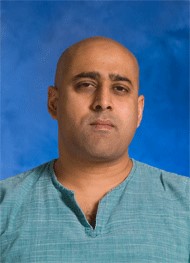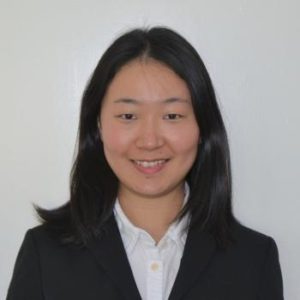 Due to the hierarchical nature of high-temperature hydrocarbon oxidation, modeling the combustion chemistry of higher hydrocarbon fuels typically requires a fuel-specific reaction model that describes the fragmentation of the fuel into small species, and a foundational fuel chemistry model that describes the oxidation of these species. Shared by the combustion of large hydrocarbons, the foundational fuel chemistry is also the rate-limiting step and therefore a crucial part for constructing reliable combustion models for any higher hydrocarbons. The talk examines the aforementioned problems from both ends. The Foundational Fuel Chemistry Model (FFCM) is an effort directed at developing a reliable combustion model for the foundational fuels with rate parameters optimized and uncertainty minimized. The first version, FFCM-1,optimized for H2,H2/CO,CH2O and CH4 combustion,was constrained with carefully evaluated fundamental combustion data. The model reconciles all the experimental targets chosen and has significantly reduced prediction uncertainties. The remaining kinetic uncertainties in FFCM-1 were further analyzed with extinction and ignition residence time predictions in perfectly-stirred reactor conditions to examine the critical remaining kinetic uncertainties in FFCM-1. The optimization and uncertainty quantification procedures were also extended to include the optimization of activation energies. As a single-component large-fuel example, JP10 was studied using the Hybrid Chemistry (HyChem) approach, which assumes a decoupled fuel pyrolysis and oxidation of pyrolysis products. The pyrolysis model is described with highly-lumped steps and optimized against experimental data from shock tube and flow reactor measurements. The model performance will be discussed.
Due to the hierarchical nature of high-temperature hydrocarbon oxidation, modeling the combustion chemistry of higher hydrocarbon fuels typically requires a fuel-specific reaction model that describes the fragmentation of the fuel into small species, and a foundational fuel chemistry model that describes the oxidation of these species. Shared by the combustion of large hydrocarbons, the foundational fuel chemistry is also the rate-limiting step and therefore a crucial part for constructing reliable combustion models for any higher hydrocarbons. The talk examines the aforementioned problems from both ends. The Foundational Fuel Chemistry Model (FFCM) is an effort directed at developing a reliable combustion model for the foundational fuels with rate parameters optimized and uncertainty minimized. The first version, FFCM-1,optimized for H2,H2/CO,CH2O and CH4 combustion,was constrained with carefully evaluated fundamental combustion data. The model reconciles all the experimental targets chosen and has significantly reduced prediction uncertainties. The remaining kinetic uncertainties in FFCM-1 were further analyzed with extinction and ignition residence time predictions in perfectly-stirred reactor conditions to examine the critical remaining kinetic uncertainties in FFCM-1. The optimization and uncertainty quantification procedures were also extended to include the optimization of activation energies. As a single-component large-fuel example, JP10 was studied using the Hybrid Chemistry (HyChem) approach, which assumes a decoupled fuel pyrolysis and oxidation of pyrolysis products. The pyrolysis model is described with highly-lumped steps and optimized against experimental data from shock tube and flow reactor measurements. The model performance will be discussed.
Events and Seminars
Metastructures For Wave And Vibration Control: Internal Resonances, Edge States and Quasi-periodicity
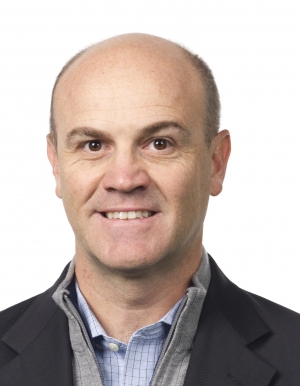 Beyond the mere notion of a material, metastructures draw their unique characteristics from their finite size and the existence of interfaces. The resulting structural assemblies feature unprecedented performance in terms of stress wave mitigation, wave guiding, acoustic absorption, and vibration isolation.
Beyond the mere notion of a material, metastructures draw their unique characteristics from their finite size and the existence of interfaces. The resulting structural assemblies feature unprecedented performance in terms of stress wave mitigation, wave guiding, acoustic absorption, and vibration isolation.
The talk illustrates the frequency-selective properties of periodic metastructures, which result in their ability to direct waves in preferential direction and attenuate vibrations at certain frequencies. Such properties are observed in complex structural lattices, and in structural components equipped with periodic arrays of adaptive electromechanical resonators. The presentation will also introduce basic concepts that govern the onset of localized, interface wave modes. Specifically, spring-mass systems, lattices, and plates with internal resonators will be presented as part of a framework that seeks for mechanical lattices that exhibit one-way, edge-bound, defect-immune, wave motion. Finally, quasi-periodic structural assemblies are introduced as configurations that support vibration confinement in systems that are not ordered, but are described by deterministic property distributions. Results for beam and plate structures with quasiperiodic arrangements of grounding springs and lumped masses are presented to illustrate the unique dynamic behavior characterized by a multitude of highly localized modes of vibration.
Biographical Sketch: Massimo Ruzzene is the Pratt and Whitney Professor in the Schools of Aerospace and Mechanical Engineering at Georgia Institute of Technology. He received a PhD in Mechanical Engineering from the Politecnico di Torino (Italy) in 1999. He is author of 2 books, more than 160 journal papers and 200 conference papers. He has participated as a PI or co-PI in various research projects funded by the Air Force Office of Scientific Research (AFOSR), the Army Research Office (ARO), the Office of Naval Research (ONR), NASA, the US Army, US Navy, DARPA, the National Science Foundation (NSF), as well as companies such as Boeing, Eurocopter, Raytheon, Corning and TRW. Most of his current and past research work has focused on solid mechanics, structural dynamics and wave propagation with application to structural health monitoring, metamaterials, and vibration and noise control. M. Ruzzene is a Fellow of ASME, an Associate Fellow of AIAA, and a member of AHS, and ASA. He served as Program Director for the Dynamics, Control and System Diagnostics Program of CMMI at the National Science Foundation between 2014 and 2016.
Far-Field and Near-Field Thermal Radiation with Nanostructures and 2D Materials
 Abstract: Radiative heat transfer between closely spaced objects can be greatly enhanced at nanoscale separation. Furthermore, the interaction of electromagnetic waves with micro/nanostructured materials can potentially modify their far-field radiative properties. Recent advances in graphene and other two-dimensional (2D) materials offer enormous potential to transform current microelectronic, optoelectronic, photonic devices, as well as energy systems. As a layered 2D material with carbon atoms arranged in a honeycomb lattice, graphene has unique electronic, thermal, mechanical, and optical properties. Exotic radiative properties and near-field enhancement can be enabled by graphene-covered micro/nanostructures, including perfect absorption, blocking-assisted transmission, and giant near-field radiative transfer. As a natural hyperbolic material, hexagonal boron nitride (hBN) can support multiple orders of phonon-polariton waveguide modes in its two infrared Reststrahlen bands. We have theoretically demonstrated that hybrid graphene-hBN-film heterostructures can significantly augment photon tunneling. Furthermore, hBN-covered metal-gratings and gratings made of hBN exhibit unique radiative properties for the spectral and directional control of thermal radiation. In addition to the theoretical findings, I will also present some measurement results of near-field thermal radiation between flat plates and far-field spectral radiative properties of nanostructured materials.
Abstract: Radiative heat transfer between closely spaced objects can be greatly enhanced at nanoscale separation. Furthermore, the interaction of electromagnetic waves with micro/nanostructured materials can potentially modify their far-field radiative properties. Recent advances in graphene and other two-dimensional (2D) materials offer enormous potential to transform current microelectronic, optoelectronic, photonic devices, as well as energy systems. As a layered 2D material with carbon atoms arranged in a honeycomb lattice, graphene has unique electronic, thermal, mechanical, and optical properties. Exotic radiative properties and near-field enhancement can be enabled by graphene-covered micro/nanostructures, including perfect absorption, blocking-assisted transmission, and giant near-field radiative transfer. As a natural hyperbolic material, hexagonal boron nitride (hBN) can support multiple orders of phonon-polariton waveguide modes in its two infrared Reststrahlen bands. We have theoretically demonstrated that hybrid graphene-hBN-film heterostructures can significantly augment photon tunneling. Furthermore, hBN-covered metal-gratings and gratings made of hBN exhibit unique radiative properties for the spectral and directional control of thermal radiation. In addition to the theoretical findings, I will also present some measurement results of near-field thermal radiation between flat plates and far-field spectral radiative properties of nanostructured materials.
Biographical Sketch: Professor Zhuomin Zhang earned a Ph.D. degree from MIT and worked at NIST and University of Florida prior to joining Georgia Tech, where he currently is a professor in mechanical engineering. He received his B.S. and M.S. degrees from the University of Science and Technology of China (Hefei). He is a Fellow of AAAS, ASME, and APS. Professor Zhang’s research interests are in micro/nanoscale heat transfer, especially thermal radiation for energy conversion and temperature measurement. He has written a book, Nano/Microscale Heat Transfer, co-authored over 180 journal papers and 10 book chapters, and given over 370 invited and contributed presentations. Some of his former students have established independent careers at major universities and industry in the United States, China (mainland and Taiwan) and South Korea. In addition, Professor Zhang has supervised many visiting scholars, postdoctoral fellows and undergraduate student researchers. He served as the Program Chair of the ASME 3rd Micro/Nanoscale Heat & Mass Transfer International Conference (Atlanta, March 2012), Chair of the 2nd International Workshop on Nano-Micro Thermal Radiation (Shanghai, June 2014), and General Chair for the ASME 5rd Micro/Nanoscale Heat & Mass Transfer International Conference (Singapore, January 2016). He currently serves as an associate editor of the Journal of Thermophysics & Heat Transfer and Journal of Quantitative Spectroscopy & Radiative Transfer. Professor Zhang was a recipient of the 1999 Presidential Early Career Award for Scientists and Engineers (PECASE) and the 2015 ASME Heat Transfer Memorial Award (in the Science category). He has also won a number of teaching, research, and best paper awards.
Tumor Growth Biomechanics
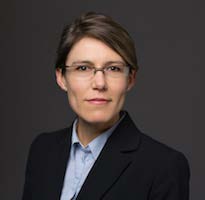 Abstract: Cancer is a disease whereby multiple genetic mutations confer upon cancer cells the ability to
Abstract: Cancer is a disease whereby multiple genetic mutations confer upon cancer cells the ability to
endlessly proliferate, evade death, and activate their environment. In every stage of solid tumor development—
from tumor initiation to metastasis—abnormally stiff tissue and increased mechanical stresses have been
implicated. Increased stiffness of the tumor environment is, in general, a hallmark of solid tumors, which can
sometimes even be palpated. Moreover, increased mechanical stresses result from tumor growth itself. The
abnormally stiff tissue and increased mechanical stresses associated with solid tumor growth present different tissue-level biomechanical signals than during healthy tissue growth. Biomechanical signals —translated by cells into biochemical signals via mechanotransduction—are known to effect cell behaviors such as gene expression, phenotype, and differentiation. However, exactly how the biomechanical signals regulate tumor-scale development is not known. Our research is focused on gaining a fundamental understanding of the relationship between the biomechanical environment and the initiation and progression of solid tumors. Due to the myriad factors involved, we engineer in vitro model 3D tumor microenvironments to target particular biomechanical aspects of tumor growth and metastasis, e.g., growth against mechanical stress and interactions with ECM proteins in specific 3D patterns. Engineering precise, yet simple, systems allows us to study the broader physics principles of tumor growth and tumor cell interactions with their microenvironment. For example, we have recently shown that tumor growth morphology is highly sensitive to the mechanical microenvironment. Using such a systems approach, our overall goal is to identify biomechanical drivers and mechanotransduction pathways in cancer biology. An understanding of the biomechanical drivers and the mechanoreceptors they act on will open new pharmacological approaches to target the tumor microenvironment or mechanoreceptors. To accomplish our goals, we use a combination of techniques, including experimental mechanics of materials, solid and fluid mechanics, micro-fabrication, soft lithography, cell culture and biology, live-cell imaging, fluorescence microscopy, and automated image analysis.
Biographical Sketch: Professor Kristen Mills is an Assistant Professor in the Department of Mechanical, Aerospace and Nuclear Engineering (MANE) at Rensselaer Polytechnic Institute. She joined RPI in 2015 after completing a postdoctoral position in the Department of New Materials and Biosystems at the Max Planck Institute for Intelligent Systems. During her postdoctoral position, she was also a Lecturer in the Advanced Materials Program at the University of Ulm. She holds a PhD degree in Mechanical Engineering from the University of Michigan, and a B. Sc. degree in Mechanical Engineering from the University of California, San Diego. She is a recipient of the National Science Foundation Graduate Research Fellowship (2002) and of a Research Fellowship for Postdoctoral Researchers from the Alexander von Humboldt Foundation.
Recent Advances in Premixed Turbulent Combustion: Research and its Relevance to Aerospace Propulsion
Abstract: 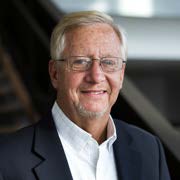 Gas turbines for propulsion and for stationary power generation typically burn fuel in a “partially-premixed” mode. The portions of the flames that are premixed may not anchor properly and may lead to combustion instability oscillations, liftoff, flameout and excessive heat transfer. This talk will survey recent advances in premixed turbulent combustion research in the regime of “extreme” turbulence. New measurements are made possible by kilohertz laser imaging diagnostics. Challenges are to extend the studies to highly preheated reactants, elevated pressures and complex (JP-8) fuels. To help develop a physically-accurate combustor design model, laser imaging was used to determine where the chemical reactions occur and whether they should be modeled as flamelets or as distributed reactions. Imaging at 20 kHz was performed to simultaneously quantify the gas temperature, species concentrations (of formaldehyde and OH) and velocity fields in the regime of “extreme” turbulence. New physical processes associated with “extreme” turbulence are discussed.
Gas turbines for propulsion and for stationary power generation typically burn fuel in a “partially-premixed” mode. The portions of the flames that are premixed may not anchor properly and may lead to combustion instability oscillations, liftoff, flameout and excessive heat transfer. This talk will survey recent advances in premixed turbulent combustion research in the regime of “extreme” turbulence. New measurements are made possible by kilohertz laser imaging diagnostics. Challenges are to extend the studies to highly preheated reactants, elevated pressures and complex (JP-8) fuels. To help develop a physically-accurate combustor design model, laser imaging was used to determine where the chemical reactions occur and whether they should be modeled as flamelets or as distributed reactions. Imaging at 20 kHz was performed to simultaneously quantify the gas temperature, species concentrations (of formaldehyde and OH) and velocity fields in the regime of “extreme” turbulence. New physical processes associated with “extreme” turbulence are discussed.
Biosketch: James F. Driscoll is the A.B. Modine Endowed Professor of Aerospace Engineering at the University of Michigan. He applies new laser imaging diagnostics to identify the flame structure within
“extremely” turbulent combustion. The goal is to better understand and model flames within gas turbine engines, scramjets and afterburners. Prof. Driscoll’s research interests include fundamental tudies of turbulent combustion, supersonic and scramjet combustion, hydrogen-oxygen rocket combustion for NASA’s Project Constellation Center at University of Michigan and nitric oxide formation in jet engine combustors. He received his Ph.D. degree in Aerospace and Mechanical Sciences from Princeton University in 1975. He is a Fellow of the American Institute of Aeronautics and Astronautics (AIAA). He has received many awards including the Silver Medal of the Combustion Institute for outstanding paper, best paper awards from AIAA, outstanding faculty and research excellence awards from University of Michigan, AIAA service and leadership award, the Combustion and Propellant career award from the AIAA. He served as an Editor-in-chief of Combustion and Flame, the best journal in the field of combustion, between 2003 and 2009. He has served on the board of directors of the Combustion Institute and is currently the President of the Combustion Institute.
An Interdisciplinary View of Interfaces: Perspectives Regarding Emergent Phase Formation
Ab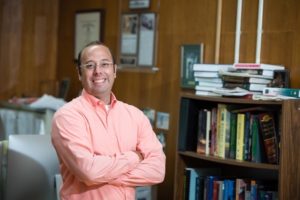 stract: The emergent properties arising from the interactions of phases including interfacial contributions (surfaces) and phase evolution at the mesoscale present new opportunities, as well as challenges, for materials performance and functionality. This presentation will highlight interfacial contributions to system level performance in diverse fields: i) mixed ionic and electronic conducting (MIEC) materials in membranes and solid oxide fuel cells, membranes and solid state Li-ion batteries and ii) ceramic waste forms for nuclear waste immobilization. Mixed ionic-electronic conductors are widely used in devices for energy conversion and storage. Grain boundaries and surfaces in these materials have nanoscale spatial dimensions, which can generate substantial resistance to ionic transport. Composite systems that preferentially form “emergent” phases may be used to enhance the grain boundary ionic conductivity, while surface coatings may be used to target enhanced kinetics. Durable ceramic waste forms that incorporate a wide range of radionuclides have the potential to broaden the available disposal options and to lower the storage and disposal costs associated with advanced nuclear fuel cycles. Studies at the interface between disciplines provide unique case studies for understanding materials behavior; for example, knowledge in one application area on how to constrict tunnels to trap mobile Cesium in nuclear waste can be used to develop strategies to enhance tunnel mobility for Li, Na and K in battery applications.
stract: The emergent properties arising from the interactions of phases including interfacial contributions (surfaces) and phase evolution at the mesoscale present new opportunities, as well as challenges, for materials performance and functionality. This presentation will highlight interfacial contributions to system level performance in diverse fields: i) mixed ionic and electronic conducting (MIEC) materials in membranes and solid oxide fuel cells, membranes and solid state Li-ion batteries and ii) ceramic waste forms for nuclear waste immobilization. Mixed ionic-electronic conductors are widely used in devices for energy conversion and storage. Grain boundaries and surfaces in these materials have nanoscale spatial dimensions, which can generate substantial resistance to ionic transport. Composite systems that preferentially form “emergent” phases may be used to enhance the grain boundary ionic conductivity, while surface coatings may be used to target enhanced kinetics. Durable ceramic waste forms that incorporate a wide range of radionuclides have the potential to broaden the available disposal options and to lower the storage and disposal costs associated with advanced nuclear fuel cycles. Studies at the interface between disciplines provide unique case studies for understanding materials behavior; for example, knowledge in one application area on how to constrict tunnels to trap mobile Cesium in nuclear waste can be used to develop strategies to enhance tunnel mobility for Li, Na and K in battery applications.
Biographical Sketch: Kyle Brinkman is the Dean’s Associate Professor in the Department of Materials Science and Engineering at Clemson University in Clemson, South Carolina. He received his Ph.D. in Materials Science and Engineering from the Swiss Federal Institute of Lausanne in Switzerland (EPFL), obtained an M.S. in Materials Science and Engineering and a B.S. degree in Chemical Engineering from Clemson University. He joined Clemson in 2014 from the DOE’s Savannah River National Laboratory (SRNL) where he was a Principal Engineer in the Science and Technology. Prior to working at SRNL, Kyle was a fellow of the Japanese Society for the Promotion of Science working at the National Advanced Institute of Science and Technology (AIST) in Tsukuba, Japan from 2005-2007. Kyle has authored or co-authored over 80 peer-reviewed technical publications and government reports. He was the recipient of the Karl Schwartzwalder Professional Achievement in Ceramic Engineering (PACE) from the American Ceramic Society in 2015, the TMS Young Leaders International Scholar Award in 2015, the US Department of Energy, Fuel Cycle Research and Development Early Career Researcher Award in 2013, and the SRNL Laboratory Director’s Early Career Exceptional Achievement Award in 2011. Kyle serves as the Materials Advantage (MA) and Keramos faculty advisor for Clemson’s undergraduate students in Materials Science and Engineering.
Functional Magnetic Nanomaterials: What does the future hold?
Abstract: Functional magnetic nanomaterials, whose properties are fundamentally different from their bulk counterparts, have attracted a global interest owing to their prospective applications in advanced spintronics and nanomedicine. In this lecture, I will discuss fundamental aspects of nanomagnetism, properties of magnetic materials upon size reduction to the nanoscale, and recent advances in synthesis, characterization and applications of magnetic nanomaterials and their hybrid nanostructures. In particular, I will demonstrate how magnetic (iron oxide) nanoparticles can be effectively exploited for selective drug delivery, magnetic hyperthermia, and biodetection. Finally, I highlight our recent discovery of strong room-temperature ferromagnetism in transition metal dichalcogenide (VSe2) as the material is reduced from bulk (micro-size) to a single layer (less than nm). This is a new type of magnetic nanomaterial which has the potential to transform the field of van der Waals spintronics.
Functional magnetic nanomaterials, whose properties are fundamentally different from their bulk counterparts, have attracted a global interest owing to their prospective applications in advanced spintronics and nanomedicine. In this lecture, I will discuss fundamental aspects of nanomagnetism, properties of magnetic materials upon size reduction to the nanoscale, and recent advances in synthesis, characterization and applications of magnetic nanomaterials and their hybrid nanostructures. In particular, I will demonstrate how magnetic (iron oxide) nanoparticles can be effectively exploited for selective drug delivery, magnetic hyperthermia, and biodetection. Finally, I highlight our recent discovery of strong room-temperature ferromagnetism in transition metal dichalcogenide (VSe2) as the material is reduced from bulk (micro-size) to a single layer (less than nm). This is a new type of magnetic nanomaterial which has the potential to transform the field of van der Waals spintronics.
Biographical Sketch: Dr. Phan is an Associate Professor of Physics at the University of South Florida, USA. He received B.S., M.S., and Ph.D. degrees in Physics from Vietnam National University (2000), Chungbuk National University – South Korea (2003), and Bristol University – United Kingdom (2006), respectively. His research interests lie in the physics and applications of magnetic materials, with an expertise on the development of novel materials exhibiting magnetocaloric and magnetoimpedance effects for energy-efficient magnetic refrigeration and smart sensor technologies. He has published more than 240 peer-reviewed journal papers (h-index: 40 from Google Scholar), 4 review papers, 4 book chapters, and 1 text book. Presently, he serves as Editor for Journal of Electronic Materials, Editor for Applied Sciences, and Managing Editor for Journal of Science: Advanced Materials and Devices. He is a regular reviewer for more than 100 major journals, with 10 “Outstanding Referee” awards from various ISI journals. He is the winner of the 2017 Outstanding Research Achievement Award of the University of South Florida. He has delivered keynote, plenary and invited talks at professional meetings on Magnetism and Magnetic Materials (MMM, ICM, APS, MRS, ISAMMA) and organized international conferences on Nanomaterials, Energy, and Nanotechnology.
Multiscale Atomistics for Defects in Electronic Materials
Abstract: Ionic solids are important for electronic and energy storage/conversion devices. Examples include ferroelectrics and solid oxides. Defects in these materials play a central role in enabling their properties: for example, the electromechanics of ferroelectrics occurs by the nucleation and growth of domain wall defects, and solid oxide ionic conduction is through the motion of point defects. I will talk about our efforts to develop multiscale atomistic methods to understand the structure of defects in these materials. The central challenge is the long-range nature of the electrostatic interactions coupled with the nonlinearity of the short-range interactions.
Biographical Sketch: Kaushik Dayal is Professor of Engineering at Carnegie Mellon University. He received his B.Tech. at the Indian Institute of Technology Madras and his M.S. and Ph.D. in Mechanical Engineering at Caltech. His research interests are in the area of theoretical and computational multiscale methods applied to functional materials and electromagnetic effects. His research has been recognized by young investigator awards from ARO, AFOSR and NSF, the Eshelby and Leonardo da Vinci medals, and the Carnegie Institute Early Career Fellowship. He has held visiting appointments at the University of Bath, University of Bonn, National Energy Technology Laboratory and Air Force Research Laboratory.
Microstructure-induced Capillary Forces and their Role in Bone Regeneration
 Abstract: More than 1.5 million people undergo bone graft procedures annually in the US to repair bone defects that will not heal spontaneously. These defects severely decrease the quality of life and are an economic burden to those affected and to the health care system. The already considerable demand for treatment is growing rapidly as the population ages and life expectancy increases. Allograft and autograft simply cannot adequately address the growing demand. The biggest technical and scientific challenge in treating these defects is in achieving complete osteointegration. There are promising approaches that combine scaffolds with exogenous cells and growth factors; however, these approaches are complex, expensive, and are still often considered to be too risky to the patient. New approaches that are safe, can be implemented in the near-term, and that could be applied to a range of scaffolds, and potentially even allografts, are needed. My research group focuses on manufacture, design, characterization, and application of CaP scaffolds with multiscale porosity. Our approach is to use capillary action to self-seed, or impregnate, CaP scaffolds that have multiscale porosity. We hypothesized that capillary force driven self-seeding would enhance bone regeneration. In vitro studies and a mathematical model showed that the micropore-generated capillarity generated was sufficient to draw in cells. Further, the penetration depth was dependent on cell size and stiffness, with some cell types penetrating further than others. In the subsequent in vivo study, samples that used capillarity, i.e. dry samples, were implanted and compared to two groups: wet and non-microporous (NMP). Wet samples were infiltrated with PBS prior to implantation such that they could not make use of capillarity. NMP samples did not contain microporosity and therefore had reduced capillarity. After three weeks, the average volume fraction of bone for all groups was the same across groups. However, the distribution of bone and the depth of bone growth were significantly better for dry samples compared to wet and NMP. The results have important implications in scaffold design, and use of this mechanism will help to address the challenge of repair of critical size bone defects in scaffold-based bone repair. Further, it will do so without the use of growth factors or exogenous cells.
Abstract: More than 1.5 million people undergo bone graft procedures annually in the US to repair bone defects that will not heal spontaneously. These defects severely decrease the quality of life and are an economic burden to those affected and to the health care system. The already considerable demand for treatment is growing rapidly as the population ages and life expectancy increases. Allograft and autograft simply cannot adequately address the growing demand. The biggest technical and scientific challenge in treating these defects is in achieving complete osteointegration. There are promising approaches that combine scaffolds with exogenous cells and growth factors; however, these approaches are complex, expensive, and are still often considered to be too risky to the patient. New approaches that are safe, can be implemented in the near-term, and that could be applied to a range of scaffolds, and potentially even allografts, are needed. My research group focuses on manufacture, design, characterization, and application of CaP scaffolds with multiscale porosity. Our approach is to use capillary action to self-seed, or impregnate, CaP scaffolds that have multiscale porosity. We hypothesized that capillary force driven self-seeding would enhance bone regeneration. In vitro studies and a mathematical model showed that the micropore-generated capillarity generated was sufficient to draw in cells. Further, the penetration depth was dependent on cell size and stiffness, with some cell types penetrating further than others. In the subsequent in vivo study, samples that used capillarity, i.e. dry samples, were implanted and compared to two groups: wet and non-microporous (NMP). Wet samples were infiltrated with PBS prior to implantation such that they could not make use of capillarity. NMP samples did not contain microporosity and therefore had reduced capillarity. After three weeks, the average volume fraction of bone for all groups was the same across groups. However, the distribution of bone and the depth of bone growth were significantly better for dry samples compared to wet and NMP. The results have important implications in scaffold design, and use of this mechanism will help to address the challenge of repair of critical size bone defects in scaffold-based bone repair. Further, it will do so without the use of growth factors or exogenous cells.
Biographical Sketch: Professor Amy Wagoner Johnson is an Associate Professor in the Department of Mechanical Science and Engineering (MechSE) at the University of Illinois at Urbana-Champaign, an inaugural faculty member of the new Carle Illinois College of Medicine, and a Chair of Excellence with the NanoSciences Foundation (Grenoble, France). Her research focuses on biomaterials and biomechanics, including soft tissue related mechanics to preterm birth and microstructural cues in CaP-based materials for bone regeneration. She received her BS in Materials Science and Engineering from The Ohio State University, and PhD in Engineering from Brown University in 2002 with major in materials science and minor in solid mechanics. She joined University of Illinois in 2001 as research faculty, became an Assistant Professor in 2005, and Associate Professor in 2012. She is currently a part-time faculty member of the Beckman Institute for Advanced Science and Technology, and has affiliations with the Department of Bioengineering, and Institute for Genomic Biology, where she is a Core Member of the Regenerative Biology and Tissue Engineering Theme.
